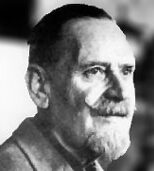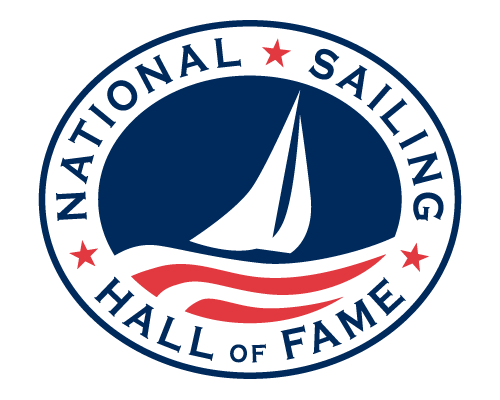
Lewis Francis Herreshoff
November 11, 1890 - December 1, 1972
Bristol, Rhode Island
Son of 2011 National Sailing Hall of Fame Inductee Nathanael Greene Herreshoff (“The Wizard of Bristol”), L. Francis had a tough act to follow. The fourth of five sons, he was slated to manage the family farm (which he did not like). Instead, he yielded with enthusiasm to the lure of the boatyard, where he mastered wood and metal work. In 1926, after apprenticing with noted designer Starling Burgess, he opened his own design office and workshops in Marblehead, Massachusetts, where he built elegant boat fittings and beautiful functional cannons – he could machine about anything. What he accomplished there is legendary. He produced the H28, the Yankee one design (with Burgess), the innovative America’s Cup contender Whirlwind, and the iconic ocean racers Tioga and Ticonderoga, to mention just a few of his fast, gorgeous creations. He was constitutionally unable to create a boat that wasn’t stunning. Designer Clinton Crane wrote of him, “I know no living designer who has a better eye for form.” Along the way, Herreshoff conceived the modern shroud tang, the wing sail, and the canting keel, among other inventions. All sailors owe him a debt of gratitude for streamlining their sport. L. Francis believed in wood, considered fiberglass “unlovely,” and wrote articles in Rudder magazine for many years aimed at the home builder. One series led to his marvelous book, The Common Sense of Yacht Design. While his designs continue to capture our attention and elicit praise, it is the writing of L. Francis that reveals the appealing, humorous nature of the man. While emphasizing the minimal effect of negative pressure on the lee side of a sail, Herreshoff writes in Common Sense, “Just why aeronautical students are taught that the upper surface of a wing does the most lifting I cannot say, but it is likely that some so-called professors are trying to make the students believe the mechanics of dynamic flight are a miracle understood only by themselves and God.” Later in a chapter titled, “Cabin Arrangement,” Herreshoff recalls an anxious night he spent in a garishly over-decorated motor yacht stateroom, and his dream (in silk sheets) in which he was told, “You will ne’re again see frames, nor deck beams, nor carlings….ne’re again hear the ripple of waves on planking; nor the rain on the deck; nor the wind in the rigging.” He was particularly artistic and had great common sense for hull structure and rigs. However, he was far less analytical and relied less on mathematics than did his father. For L. Francis Herreshoff, yacht design was fine art founded in common sense. – Roger Vaughan
Preserving America’s Sailing Legacy
Engaging Sailing’s Next Generation
Stay Connected to the National Sailing Hall of Fame
